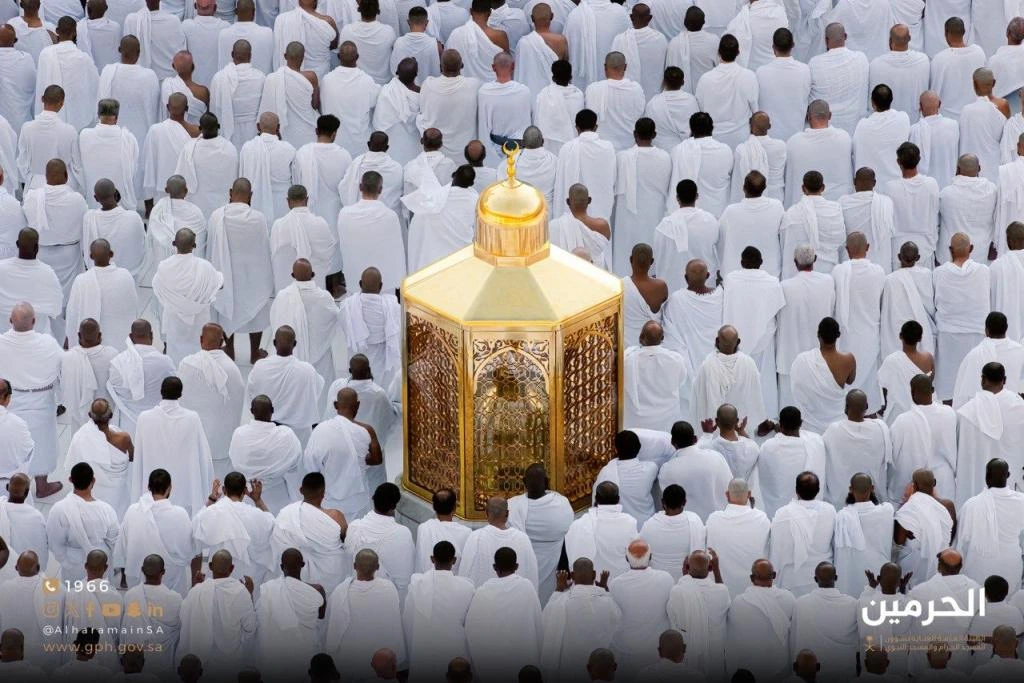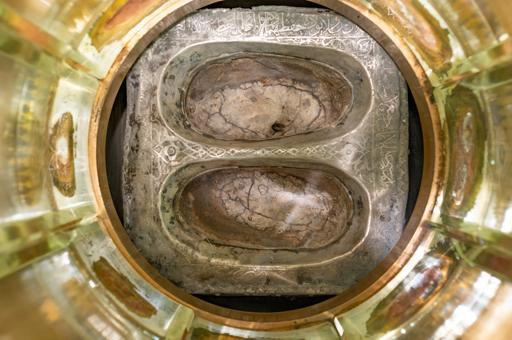
The Maqam of Ibrahim (peace be upon him) is the historic stone on which Prophet Ibrahim stood while building the Ka’bah with his son Ismail (peace be upon them). As the walls of the Ka’bah rose, Ibrahim used this stone to stand on during construction, and his footprints became imprinted in the stone, making it a significant historical landmark. This unique, soft water stone, distinct from flint, is square-shaped with dimensions of approximately 50 centimeters in length, width, and height. In its center are the footprints of Ibrahim (peace be upon him), marked by two oval indentations matching the shape of his feet. The stone was known to the Arabs in pre-Islamic times and held great significance, as mentioned by the poet Abu Talib: “And the footstep of Ibrahim in the soft rock, barefoot without sandals.”

Narrations about the construction of the Ka’bah recount that Ibrahim (peace be upon him) worked to build the House of Allah as commanded by Allah, standing on this stone while Ismail handed him the stones. Both would utter words of praise and glorification: “Our Lord, accept [this] from us.” The Maqam of Ibrahim became a symbol of faith and is associated with many spiritual virtues.
One of the most prominent virtues of the Maqam is its designation as a place of prayer for Muslims during Hajj rituals, as Allah commanded: “And take the Maqam of Ibrahim as a place of prayer” [Quran 2:125]. The Messenger of Allah (may Allah’s salah and salam be upon him) said: “The corner and the Maqam are two rubies from the rubies of Paradise.” Its elevated status continued after the Prophet’s time, as it was moved from its place next to the Ka’bah during the caliphate of Umar ibn al-Khattab to facilitate Tawaf and expand the Grand Mosque.
The Maqam of Ibrahim has undergone several stages of care and maintenance over the centuries, from being covered with gold during the caliphate of al-Mahdi to renovations in later periods. The enclosure surrounding it was removed during the reign of King Faisal bin Abdul Aziz, and it was covered with a transparent crystal cover to allow visitors to see it more clearly. Subsequent improvements included renewing the metal structure of the cover and adding decorations befitting its sanctity.
Thus, the Maqam of Ibrahim remains a living testament to the faith and great sacrifices made by the prophets in building and establishing the rituals of Allah.